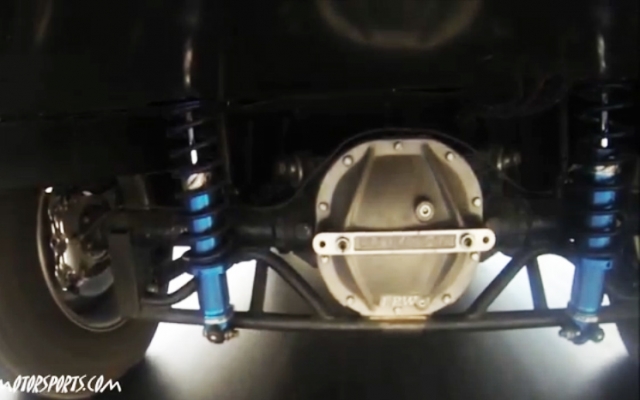The GoPro camera has revolutionized drag racing by capturing breath-taking videos in stunning detail. Most racers choose to mount their camera on the hood or the side of the vehicle in order to capture the race and hopefully a glimpse of the win light in their lane. While most racers are interested in capturing their race for bragging rights later, some use the camera camera as a tuning aid.
 Suspension tuning on ultra-high horsepower cars running small tires can be difficult especially in drag radial classes that prohibit the use of wheelie bars, and many teams use video to capture the car at launch to help get the suspension sorted out. Mounting a camera underneath the car can help the team to understand what is going on and help them to see if there is something going on they can learn from.
Suspension tuning on ultra-high horsepower cars running small tires can be difficult especially in drag radial classes that prohibit the use of wheelie bars, and many teams use video to capture the car at launch to help get the suspension sorted out. Mounting a camera underneath the car can help the team to understand what is going on and help them to see if there is something going on they can learn from.
Most action sports cameras have a wide field of view and have the ability to capture video in slow motion. This wide field of view allows you to mount the camera in a tight area, yet allows you to see a large area of interest.Slow motion video is helpful when capturing fast moving objects such as tire rotation or suspension displacement.
Mounting an a camera under a car can be nerve racking, but if you use the correct mount, you will have stable video without the need to worry about losing your camera. Several companies are developing custom aluminum mounts for GoPro cameras such as the Vector mount, which enables you to mount the camera in extreme locations.
We recently had the opportunity to capture video of the rear suspension of an Ultra Street Drag Radial Mustang piloted by Roger Roberts. The GoPro Hero3 camera was mounted to the parachute mount underneath the car with the camera facing the tire and rear suspension. This multiple event winning Mustang features a 23° SBC engine built by Nelson Competition Engines and a Wilson 4500 series nitrous plate that was flowed by Kevin Neal of Neal Performance Innovations. The suspension on this Mustang and the braced Ford 8.8 rear end were fabricated by TRZ Motorsports.

















